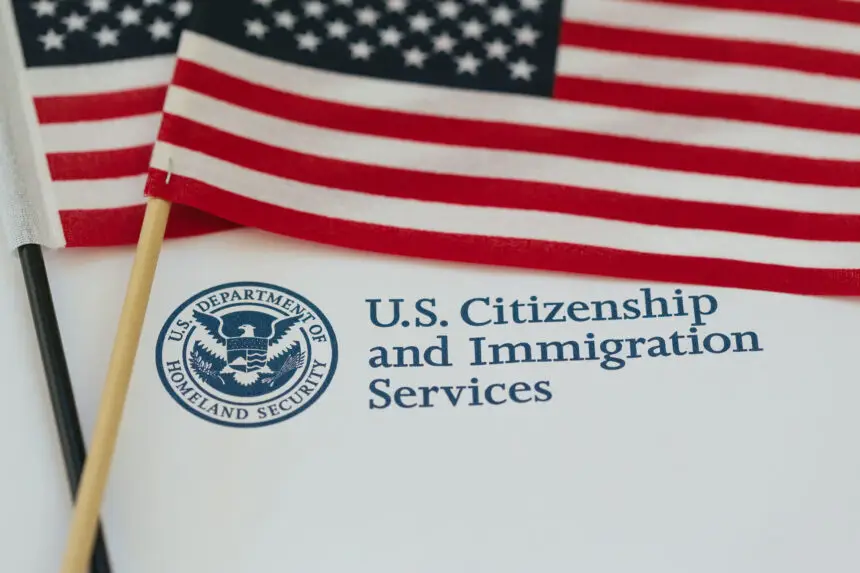The Department of Homeland Security (DHS) has published a proposed rule to expand the collection and use of biometric data. Biometric data refers to unique physical or behavioral traits used to identify individuals, such as fingerprints, facial imaging, iris scans (the colored part of the eye), palm prints, voice recordings, and, in some cases, DNA samples. The expansion would cover a broader range of people involved in immigration proceedings.
The text, published in the Federal Register, is not yet final and is subject to public comment until January 2, 2026.
The draft proposal would require anyone “filing or associated with” an application for an immigration benefit to provide biometrics, regardless of age. In practical terms, DHS would collect data from both children and adults, including U.S. citizens involved as sponsors, co-petitioners, or signatories. The proposal states DHS “proposes to require the submission of biometric data by any person […] regardless of age,” representing an unprecedented approach at this level of generality.
In detail, the proposal redefines the term “biometrics” to include “anatomical, physiological, or behavioral” characteristics and provides an indicative list: facial imaging, fingerprints and palm prints, handwritten signatures, ocular imaging (iris), voiceprints, and DNA. It also formalizes the use and reuse of biometrics for identity verification, security investigations, and the production of secure documents. “DHS proposes to define [the] biometric” broadly enough to incorporate new technologies as they emerge, specialized media reports summarize.
The department outlines several key goals: strengthening identity verification, combating fraud, protecting children from trafficking, and enhancing national security. However, the wide scope raises questions about privacy and proportionality. Nextgov reports that the rule would allow CBP and ICE to collect biometrics from children under 14 for the first time. This would greatly extend current practices.
Continuous Monitoring Through Citizenship
Another key element of the text is the implementation of “continuous vetting” of individuals’ status throughout their presence in the United States. As law firm Ogletree Deakins summarizes, DHS “plans to implement continuous immigration verification,” which could result in repeated submissions of biometric data until citizenship is obtained. This long-term surveillance would be added to existing spot checks when new elements appear in a case file.
The proposal also expands the administration’s authority regarding DNA. DHS would be granted the power to “require, request, or accept” DNA samples or results to establish biological relationships or biological sex when these elements determine eligibility for an immigration benefit. Commentators, however, warn about the sensitivity of this data and the security and governance issues it entails.
The proposal would not target only foreign applicants. Corporate signatories who sponsor candidates (such as petitioners, HR officers, or legal officers) could also be subject to biometric requirements, a departure from current practice where only foreign nationals are required to provide this data. Immigration firms warn that this extension could mean additional appointments and increased delays in certain visa categories (H-1B, L-1, EB), with added administrative costs.
A Broader Regulatory Movement
The proposal is part of a sequence in which DHS is adjusting multiple frameworks related to identity and borders. In late October, a separate final rule already authorized DHS to photograph all non-citizens entering and leaving the country and to collect other biometrics as appropriate, eliminating references to pilot programs. This measure, although separate from the USCIS NPRM, highlights the agency’s general direction toward the widespread adoption of biometric technologies.
The process follows the standard regulatory procedure: publication in the Federal Register, call for comments, and then drafting of the final rule after reviewing submissions. The American Immigration Lawyers Association (AILA) notes that public comments are due by January 2, 2026, and invites stakeholders to highlight potential impacts on privacy, access to rights, and operational burdens.
Practitioners and families should watch several areas. These include the definition of persons “associated with” an application, which might include U.S. citizens. Also important are data retention rules, conditions for reusing collected biometrics, and the process for continuous vetting. Expert analyses (Fragomen, BAL) suggest that the combination of these elements could alter the experience with immigration platforms, including scheduling, delays, and costs.
Expanded collection: DHS proposes to require biometric collection from any person involved in an immigration procedure, with no age limit, and with an expanded definition of modalities (face, fingerprints, palms, iris, voice, signature, and DNA).
Continuous vetting: The text requires repeated status checks until the individual is naturalized.
Impact on employers: Employer-petitioners and their signatories may be required to provide their own biometrics, which would alter current practices and potentially lengthen certain timelines.
The public comment period runs until January 2, 2026; the rule is not yet finalized.








